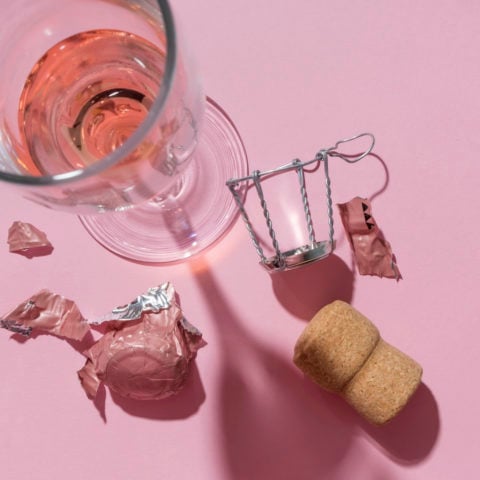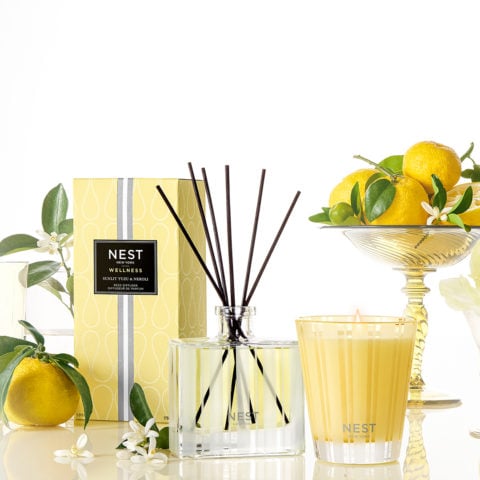Breast Cancer Awareness Month: How being diagnosed with breast cancer convinced a makeup artist to go green


Makeup artist Sheri Stroh was looking into ways of greening her life as well as her kit when, at 36, she was diagnosed with breast cancer.
LIVE CLEAN
Sheri Stroh’s favourite green products »
More about FASHION and the Canadian Breast Cancer Support Fund »
About five years ago, I read the book Not Just A Pretty Face: The Ugly Side of the Beauty Industry by Stacy Malkan, which is about potential toxins in beauty products. In general, I’m a bit of an alarmist—I kind of freak out, go hardcore and then lighten up on certain things. I mean, I basically live in a cloud of hairspray, but I decided I wanted to look into green products. The book just made a lot of sense: there are so many chemicals we’re exposed to, either by eating them, breathing them or putting them on ourselves. I thought maybe I could try to lessen my own exposure.
Then, in the spring of 2009, I began to feel an ache in my right breast. My bra was aggravating something and I found a lump. It concerned me enough to go to the doctor, but she wasn’t overly concerned because I was only 36 at the time. She said my breast contained dense tissue and that it was probably fibroadenoma, and I was told the same thing at the ultrasound. They told me to come back in six months. Oddly enough, the ache just went away, so nothing really reminded me to follow up.
Around nine months later, the ache came back. I felt around and the lump was still there. I couldn’t tell if it was bigger or not, but I made an appointment. Right away, they were concerned it had grown, enough to book me in for a mammogram. I knew something wasn’t right. I mean, nine months ago it was, “Oh, it’s nothing, you’re young,” and now it was, “We want you in for a mammogram, stat.” So I went in for the mammogram and waited a week for the results.
I don’t want to say I was in denial, but I was very positive. My mother always said not to worry until you have something to worry about. When the results came back, they told me they wanted me to come in for a biopsy. I remember one of the nurses looking at me and saying, “You know, at your age, it’s a good chance it’s fibroadenoma.” Ignorance is bliss—I didn’t bother looking up anything.
Two weeks later, my results were in. My husband just happened to be off work that day. He said, “We’ll get ice cream after to celebrate,” but for some reason I replied, “Well, we can go out for ice cream either way.” He asked what I meant and I said, “I just don’t have a good feeling about this.” Right off the bat we saw from the doctor’s face that something was wrong. She said, “We have some bad news.” She explained that the lump was cancerous and needed to be removed, along with some lymph nodes. She also said the kind of cancer I had, which had “mucinous” qualities, was rare—only two or three per cent of breast cancer patients get it, usually post-menopausal women—and usually it’s slower growing and not as aggressive.
My doctor had said I’d just need a lumpectomy, but my surgeon recommended I have a mastectomy, which seemed pretty dramatic. She said, “Because of the size of the tumour, you won’t be left with much. A mastectomy would probably look a lot better.” I was OK with that—if you need to take any body part, you can have it. To me it was just, “We’re going to cut it off and I’m going to get on with my life.”

In June of 2010 I had my surgery and it went really well. I had never had surgery in my life, so I thought I’d be able to go back to work in a week or two. I was so delusional. When I went in for surgical prep, I asked how long it would be before I could work, and they said, “Probably a month or so. You’re not going to be able to move your arm.” I’d forgotten that they’d be taking out a few lymph nodes as well. The nurses told me how to massage the scar tissue once the bandages were off, and recommended exercises like lifting a broomstick as high as possible or running my hands up a wall.
I went home the next day. My surgeon called after reviewing the slides of the tumour and said the surgery had been successful. She also said her office would be following up to schedule oncology appointments. I was like, “What?” She said I had to see an oncologist and a radiologist, so I asked if that meant I needed to get chemotherapy and radiation. “Not necessarily,” she said, perhaps to make me feel better. But that’s when it really hit me.
They said I could handle the radiation because of my age. That they just wanted to make sure the tumour cells were gone and that the radiation would be very local—but that it would probably get a tiny section of my lung. That was the first time the tears really came. After I saw my oncologist, I decided I wanted more opinions. Radiation was one thing, but chemo? You’re literally putting poison in my body. I was just angry—I was feeling so good after surgery and now you want to poison me; now you’re going to make me sick.
I got a second opinion but I was told the same thing: You’re young, you shouldn’t be going through this, but your body can take it. Basically, we needed to hit this with everything we had. I felt OK with the decision. I called a naturopath, which was probably one of the best decisions I’ve ever made. She put me on supplements to help with the side effects of chemo. I lost my hair, of course, but my appetite didn’t decrease, my weight stayed stable, I didn’t have mouth sores and my digestive system was great.
Two years later, I’m now considered healthy by the medical community, though I continue to have a yearly MRI.
My family has no history of breast cancer, though I learned that only 15 per cent of cases are hereditary. I was told that my tumour was estrogen receptor positive, which means it was hormonally driven—estrogen had become dominant in my body. Not Just a Pretty Face had mentioned endocrine disruptors and mimickers; I understood that they were bad but I didn’t understand the science behind it. Until now.
It was then that I really began to look into going green. I started having better success with the cosmetics I was trying. A few years before, I’d found a lot of natural makeup was inferior and I didn’t love the skincare, but the green beauty movement seems to have boomed in the past few years. I know some people say there’s no definitive research on things like parabens, but for me, I’d rather be safe than sorry.
When I started to get back into work, I began to switch things over in my kit. It is hard, because from a professional standpoint, we do need makeup to behave a certain way. I know there are arguments against silicone and I try to avoid it, but a silicone-based foundation is going to glide on more smoothly than a mineral tint. Aside from mascara, heavy coverage foundation and concealer, I’ve been able to switch everything over. I think more companies are trying and are eventually going to succeed in developing products that are not only eco-friendly but also of a more professional and luxe quality. I just think we know too much now to ignore it. —as told to Lesa Hannah
SUPPORTING ROLE
CBCSF wants women to think pink, but live green.
Twice a year, we clean out the FASHION beauty closet for an internal sale (the excitement level rivals Black Friday) and donate the proceeds to charity. The most recent recipient—and one we’d like to highlight in honor of Breast Cancer Awareness Month—is the Canadian Breast Cancer Support Fund (cbcsf.ca), an organization that caught our attention because it offers workshops on reducing exposure to toxic chemicals, including some found in makeup and skincare. The CBCSF’s main focus is providing support to women with breast cancer who are struggling financially, by helping to cover the cost of everything from groceries to hospital parking fees. “It’s heartbreaking if, at a time when you feel like you’re battling for your life, you have no resources available for food, shelter or even medical expenses—some of them aren’t covered,” says founder Donna Sheehan. “Because breast cancer is so out there and so much money is raised [for research], people think everything is taken care of.” —Sarah Daniel







